Ecological Restoration at Seiders Springs
July 15, 2022 | By Shoal Creek Conservancy
Below a large parking lot and above Shoal Creek’s eastern bank, water spills from a steep limestone bluff and flows overland into the creek. Native elbowbush cascades down the cliff face near the springs, and large live oak and pecan trees tower over the creek banks. Seiders Springs is a unique and peaceful place to visit, a site rich in history and important to Austin’s identity.
Over the years, the area around Seiders Springs has become ecologically degraded by the same factors that affect all of Shoal Creek and the rest of our urban waterways. Floods, made worse by impervious cover throughout the watershed, have scoured and eroded the creek banks, requiring interventions with bank-stabilizing materials. Parts of the banks lack healthy riparian buffer, and invasive species abound: Ligustrum trees line the hillside above the east bank, elephant ear grow in dense monocultures in the spring flow, and Johnson grass has taken off on the western bank. All of these invasive species tend to form monocultures that crowd out native plants, reducing biodiversity and undermining resilience. We thought this special site deserved some love, so in 2021-2022, we partnered with the Junior League of Austin to begin the process of ecological restoration around Seiders Springs.
To date, with the help of our Junior League volunteers, we have girdled roughly one-third of the invasive Ligustrum trees on the east hillside. Girdling is a process that slowly kills the tree by severing the pathways that carry nutrients from the leaves to the roots. In the fall of 2022, we plan to plant native trees and understory plants in their place, to help native species reclaim that space and provide all the ecological benefits of a diverse native plant community. We also held several workdays to dig hundreds of pounds of invasive elephant ear out of the spring flow and replace it with a variety of native plantings. We dug up Johnson grass and planted native eastern gamma and switch grasses, and seeded bare areas on both banks.
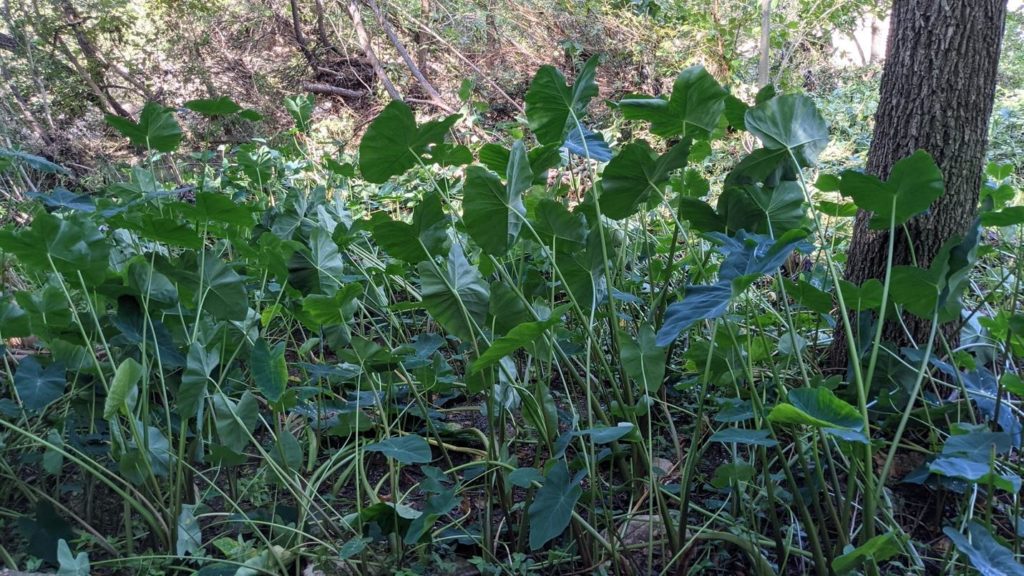
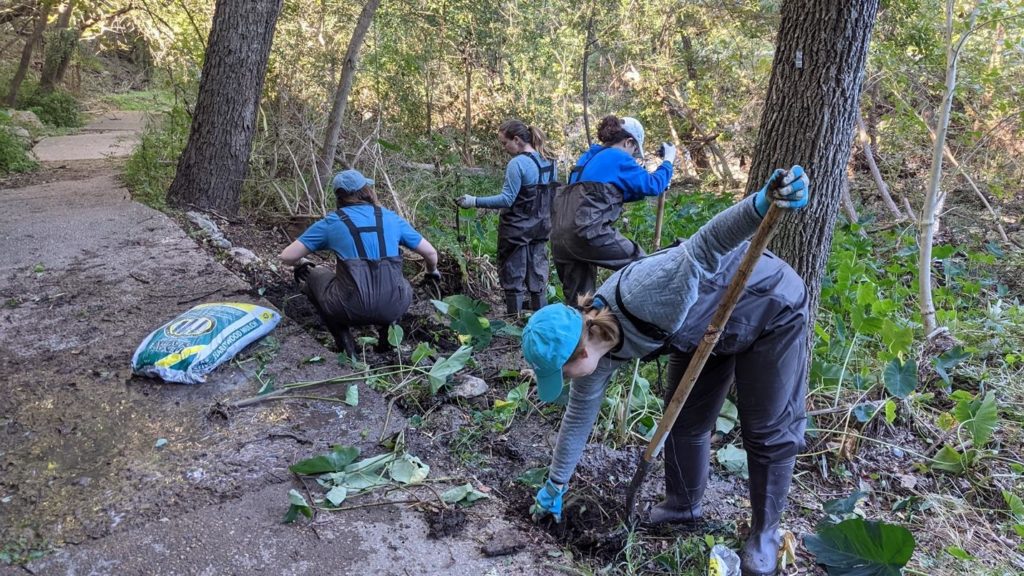
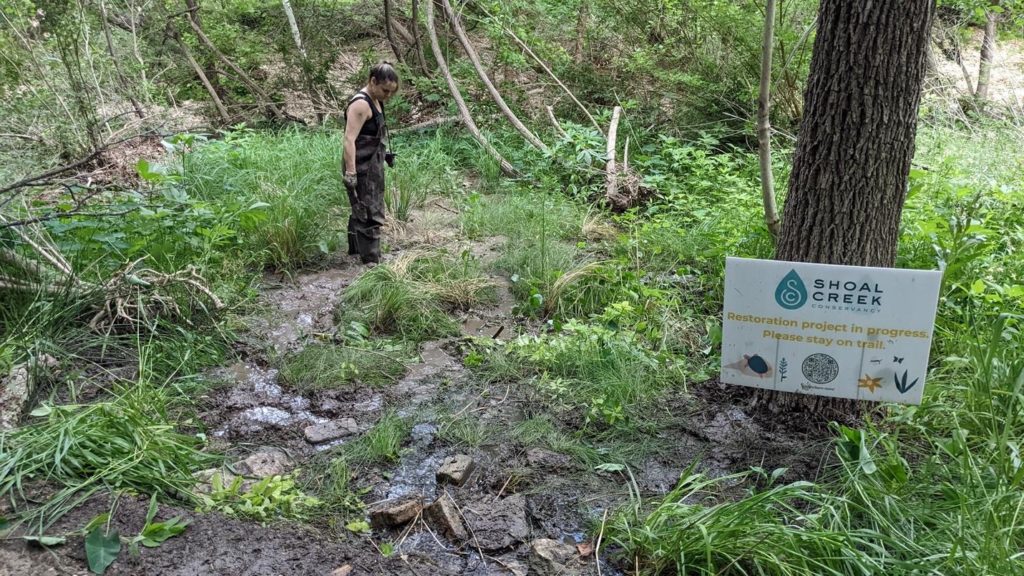
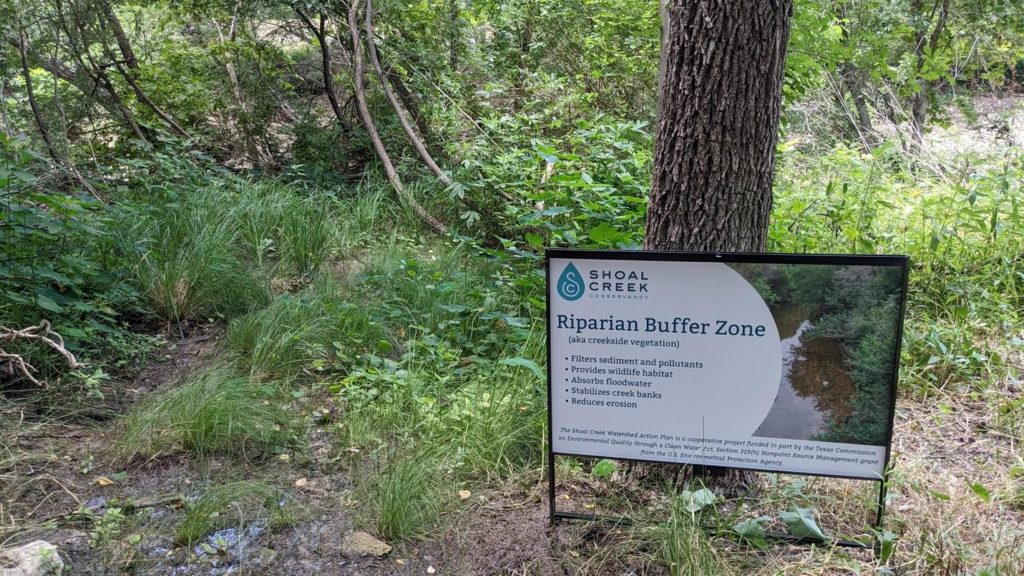
Ecological restoration requires some degree of trial and error. We try to time our treatments with the seasons, adding plantings during cool weather and the best chances of rain. Success depends on our ability to monitor, follow up and try again when necessary.
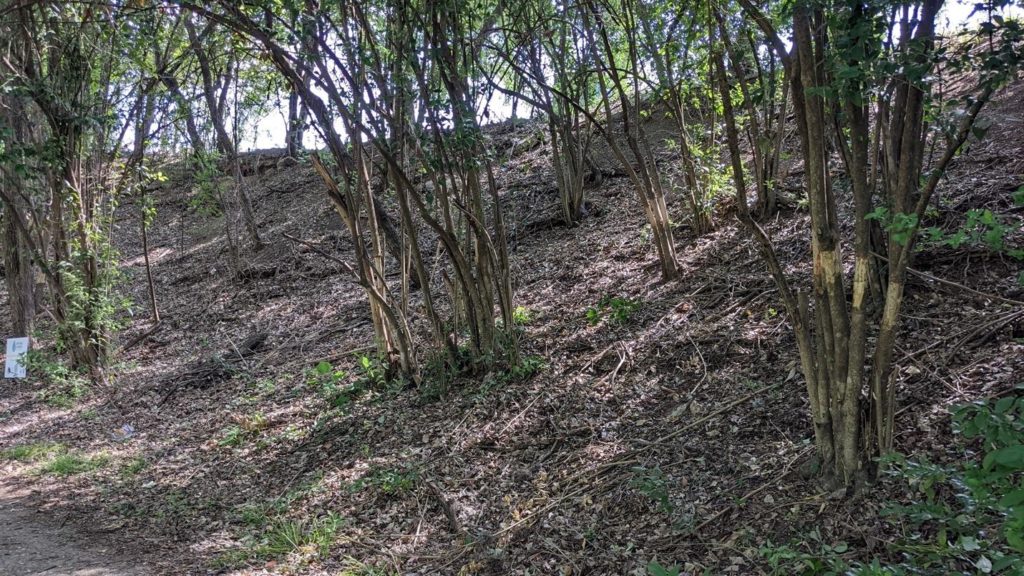
The Shoal Creek Watershed Action Plan lays out actionable steps to improve water quality, halt erosion, and restore native habitat. Ecological restoration work along the creek that expands and improves its riparian buffer zones builds towards all of these ultimate goals.
Now that our time with our Junior League volunteers has come to a close, we want to reach out to our broader community to ask: will you help us restore Seiders Springs? Join us for upcoming volunteer opportunities to continue this work, as well as to help carry out ecological restoration at other sites along Shoal. Our next volunteer service day at Seiders Springs will be on July 22nd.
The Shoal Creek Watershed Action Plan is a cooperative project funded in part by the Texas Commission on Environmental Quality through a Clean Water Act, Section 319(h) Nonpoint Source Management grant from the U.S. Environmental Protection Agency.
